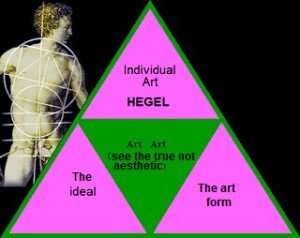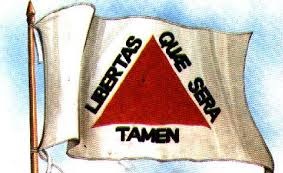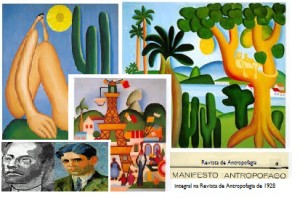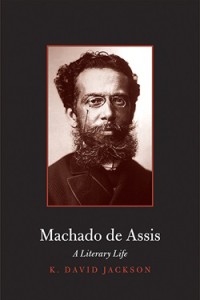
Arquivo para a ‘on-line libraries sharing’ Categoria
Aesthectic of Hegel
I was interested in studying the issue of religion in Hegel, motivated by the book of Paul Ricoeur “Lectures on Ideology and Utopia” (1986), and also the question of Misericordy and Fraternity which came to be published in a book about “Misericórdia e Fraternidade” made by a group of brazilian´s intellectuals willing to put a scholarly light on the papal´s Bull “Misericordiae vultus” launched in connection with the Jubilee year of Misericordy in Catholic Church.
by the book of Paul Ricoeur “Lectures on Ideology and Utopia” (1986), and also the question of Misericordy and Fraternity which came to be published in a book about “Misericórdia e Fraternidade” made by a group of brazilian´s intellectuals willing to put a scholarly light on the papal´s Bull “Misericordiae vultus” launched in connection with the Jubilee year of Misericordy in Catholic Church.
.
I come across a quote in an old volume of Hegel thinkers collection on the aesthetic: “For us, art is no longer the highest form that the truth chooses to assert its existence” (p. 126), and more ” in the hierarchy of the means used to express the absolute, religion and stemmed culture of reason hold the highest degree, higher than the art “(p. 43) and then a near death sentence:” the present tense conditions not they are favorable to art “(p. 44).
But then it would not be appropriate to ask: what kind of art has survived, or rather aesthetic we can say that is the aesthetic of today? I see two answers only outlined a paraphrased Hegel himself is from the “truly real,” although this separate the sensible reality and the reality of art, and the second existential: because you can not order the death of art since even in the silence of our existence, it remains alive inside of poets, artists and singers, although mambembes (popular circus) are there.
What is limited to Hegel, since “is a representation of a meaning that is not conjugated with the expression, the representation remains always a difference between idea and form” (p. 101), but which at the bottom is the idealist problem of art.
The idea that it is possible to abstract from reality the sublime, as if it were non-existent in the sensitive representation is contrasted by its “existence” since art expresses Being even nonexistent and paradoxically, because if there is an expression, it is sensitive, that is their condition of existence.
We are required to agree with Hegel: “To make the proper matter, will be up to the monstrous, disfigures to form, it is produced the grotesque” (idem), but all these traits posed by Hegel are but his denial of sublime, the attempted destruction of art and beauty, which confirm the existence “in the depths of all that, in art, can be entitled to call harmonious, the absurd and contradictory survives” (Adorno, T., Theory Aesthetics, p. 130).
Hegel, G. W. Aesthetics. Oxford: Clarendon Press, 1973. (for download) (pages of the brazilian edition).
Software textbooks
Resources for production and teaching materials in public education can be reduced, that is proven in 38 faculties there called “Community” in 13 states, covering a universe of 76,000 students in 13 states.
reduced, that is proven in 38 faculties there called “Community” in 13 states, covering a universe of 76,000 students in 13 states.
The cases analyzed and quoted in the Washington Post, is the Maryland and six other Viginia, where prices of textbooks rose 82% between 2003 and 2013, that there is three times the inflation rate and so it is a real increase price.
The OpenStax software, an organization and non-profit free software introduced open-source textbooks with peer review, it is estimated that saved more than $ 66 million to about 700,000 students, more than half of these last year.
Although some students who frequent these community colleges in a maximum of four years, programs focused in two years, are reaching the dream of going to college, not only in paid schools, but others can take courses with a high level, in less time, where the teaching material is essential.
Merchant of Venice and Brazil
 The Merchant of Venice is work most controversial and talked of Shakespeare done in the late 1500s, a period of discoveries and our view of the Renaissance decadence and early idealistic project of modernity, is also the period that Jews are expelled from England (1290-1655).
The Merchant of Venice is work most controversial and talked of Shakespeare done in the late 1500s, a period of discoveries and our view of the Renaissance decadence and early idealistic project of modernity, is also the period that Jews are expelled from England (1290-1655).
The merchant is therefore a typical caricature of the time, which sparked controversy and gave a major highlight of Shakespeare, is a villain, a Jew named Shylock, a type somewhat despicable, whose victim Christian Antonio, citizen successful Venice, which lends money to a bankrupt nobleman named Bassanio, who wants to marry Portia, a beautiful heiress who lives on the continent in Belmonte.
Antonio, however should get the loan with Shylock, owner of a fleet of ships, which is to place as collateral a pound of flesh.
His friend Antonio agrees to lend you the capital required for him to travel to Belmonte on the mainland, where he lives Portia. Antonio is a merchant, his fortune is invested in a fleet of merchant ships in foreign waters. Then he makes a loan from Shylock, a Jewish mercenary who agrees to lend the money since Antonio commit a pound of his own flesh as collateral. Bassanio comes Belmonte and learns that to win the hand of Portia will have to undergo a test involving three chests left by the girl’s father before he died.
Thanks to a trick of Portia he does well, but soon after the wedding comes the news that Antonio boats wrecked and he lost all his fortune, with his life now in the hands of Shylock. Bassanio then back to Venice as Portia architect a plan to save Antonio and Bassanio test the love for her.
The rich girl Portia are the national wealth, Anthony and his friend Bassanio are politicians to be in power stop living from the beautiful girl heritage, Shylock are corrupt businessmen and lobbyists who committed the national political system providing “services”.
In Brazilian parable Portia, can mean the people and justice, is a plan to test Bassanio, if your love for her is true, it means giving power to “love” his people.
Os poetas da Inconfidência Mineira
In the late eighteenth century, more precisely in the year 1789 a revolt was  aborted by the then government of the captaincy of Minas Gerais, in Brazil, against, among other things, the execution of spills and Portuguese rule.
aborted by the then government of the captaincy of Minas Gerais, in Brazil, against, among other things, the execution of spills and Portuguese rule.
Pour consisted of the following, Portuguese law created when the gold mines started to run out, each holding region should pay 3307 pounds of gold (1500 kilograms) per year to the Portuguese crown, but soldiers entered the family house to withdraw the belongings to complete the amount due.
Besides the lieutenant Joaquim José da Silva Xavier, known as Tiradentes the group was formed by poet Tomas Antonio Gonzaga and Claudio Manuel da Costa, the owner of Ignatius Alvarenga mine, Rolim priest, they created the motto that is the mining flag to the today: Libertas Quae Sera Tamen (Freedom albeit Late).
In the collection of Cecilia Meirelles in the collection of Ballads Inconfidência poems, she tells the story of Mines, in one of his verses:
E diz o Poeta ao Vigário, And the poet says the vicar,:
com dramática prudência: with dramatic prudence
“Tenha meus dedos cortados “Keep my fingers cut off
antes que tal verso escrevam…” before such write back …”
LIBERDADE, AINDA QUE TARDE, FREEDOM, EVEN LATER,
ouve-se em redor da mesa. hear around the table.
E a bandeira já está viva, And the flag is already alive,
e sobre, na noite imensa. and on, the immense night
E os seus tristes inventores And his sad inventors
já são réus – pois se atreveram They are already defendants –are dared
a falar em Liberdade speaking in Freedom
(que ninguém sabe o que seja) (No one knows what it is).
There is controversy about the history, because many conspirators were slaveholders and also the fact that fought for the independence of Minas Gerais, since there was a national identity, which is also necessary to remember these days, regionalism and immense inequality between states and citizens within the country.
Brazilian Modern Week´ 22
The Brazil 1922 was a foreshadow of what could happen in the 30s,  but a group of intellectuals tried positive way of looking at the future breaking with the Caboclo nihilism name I prefer than “ontology of abandonment” already mentioned in previous posts, the period has analyzed Machado to Lima Barreto. Martin Vasques da Cunha says that Sergio Buarque de Holanda, then just a literary critic visited Lima Barreto already ill in 1921, and in a strange conversation for the two requested support to a Manifesto of a Modernist Movement launched by a group of several intellectuals several areas.
but a group of intellectuals tried positive way of looking at the future breaking with the Caboclo nihilism name I prefer than “ontology of abandonment” already mentioned in previous posts, the period has analyzed Machado to Lima Barreto. Martin Vasques da Cunha says that Sergio Buarque de Holanda, then just a literary critic visited Lima Barreto already ill in 1921, and in a strange conversation for the two requested support to a Manifesto of a Modernist Movement launched by a group of several intellectuals several areas.
After listening to him talk to other Turkish magazine Klaxon, it ironic between several things would have said to the French poet Paul Verlaine saying, “This indeed was a poet. He drank like a goat .. “and according to Cunha (p. 164)” Days later, Lima publish an article in which solemnly despised paulistanos ideals, stating that he knew had long been, what was this “futurism” that both defended “.
Far from being just a break, there were these young Art Week 22, a literary desire that can be defined didactically in two ways: to find a national identity and second announce a more promising future for the country.
The tables Abapuru and Carnival in Tarsila do Amaral Madureira show these two trends, while the table Post 1928 shows a Brazil still colonial.
The Antropófogo Manifesto, who coined several famous phrases like: “Tupi or not Tupi that is the question” (Tupi is Brazilian indians), “If God is the consciousness of the Uncreated Universe, Guaraci is the mother of the living. Jaci is the mother of vegetables “among others and who also had the brothers Oswald and Mario de Andrade, who wrote Paulicéia Desvairada (1922) and Macunaíma (1928) (a screenplay).
There are many analysts who take off this week of Brazilian culture, we will return to Inconfides Miners (moviment to Brazilian´s libertation), Thomas Antonio Gonzaga and Claudio Manuel da Costa.
Machado de Assis and the Brazil roclamation of the Republic
 “The Brazilian people”, and we can also quote (back to him) Sérgio Buarque de Holanda with his Roots of Brazil, could even enumerate other as the recent Martim da Cunha Vasques Dust Glory : one (unexpected) history of Brazilian literature.It is always deeper understand the “soul” of a people peering into their literature, not by chance Marx enjoyed reading Honoré de Balzac and Lenin Leon Tolstoi, among others of course, and not to be alone on the left, Roosevelt (that said read everything) I liked to read Walter Scott in addition to historical anthologies and Greek classics.
“The Brazilian people”, and we can also quote (back to him) Sérgio Buarque de Holanda with his Roots of Brazil, could even enumerate other as the recent Martim da Cunha Vasques Dust Glory : one (unexpected) history of Brazilian literature.It is always deeper understand the “soul” of a people peering into their literature, not by chance Marx enjoyed reading Honoré de Balzac and Lenin Leon Tolstoi, among others of course, and not to be alone on the left, Roosevelt (that said read everything) I liked to read Walter Scott in addition to historical anthologies and Greek classics.
Machado de Assis (1839-1908) lived in the late period of the monarchy, Darcy Ribeiro was based on ethnic roots of the colonial period (1530 – 1815), but the historical evidence that says the philosopher Paul Ricoeur, the “I was there” is more fundamental than historiography.
We have already pointed the royalists and republicans elements of Esau and Jacob, and the political quietism in the work Memorial Aires.
Now we want to discover what is called apparent duplications in Quincas Borba, pseudo philosopher, the madness of the “ontology of abandonment” defined by Marta Senna in The Look oblique wizard, work also analyzed by Martim Vasques da Cunha.
But is the period of the proclamation (which is an edict not a popular will) of the Republic who is portrayed in Brás Cubas Epitaph, which breaks with romanticism even strong authors at the time as Flaubert and Zola, to picture a river of January with indifference, pessimism and irony, breaking with the linearity of both romantic literature as preceded the “modernism” to adopting a realistic tone.
Not coincidentally, the work began to be written from March to December 1880 in the Journal, and was later published as a book in 1881.
The work portrays slavery, social classes, scientism and positivism of the time, coming to create even a new philosophy, then developed in Quincas Borba (1891) already after the “proclamation” of the Republic (1889), Quincas Borba It came later in 1891 with a certain “philosophy” and then still Dom Casmurro (1899).
Machado de Assis and brazilian politic
Borrowed by a friend started reading the Dust of glory: one (unexpected) history of Brazilian literature, in portuguese: A poeira da glória: uma (inesperada) história da literatura brasileira, Martim Vasques da Cunha (Rio de Janeiro: Record, 2015), which is an attempt to revisit more than the national literature, peer into the Brazilian soul.
history of Brazilian literature, in portuguese: A poeira da glória: uma (inesperada) história da literatura brasileira, Martim Vasques da Cunha (Rio de Janeiro: Record, 2015), which is an attempt to revisit more than the national literature, peer into the Brazilian soul.
Of course it could not be present Machado de Assis, born on 21 June 1839 in Rio de Janeiro, then capital of the Empire of Brazil (brazilian royalistit), highlight here according to the author the work of his maturity Esau and Jacob (1904) to have would be called the last, despite the author “seem to believe that is the lack of direction the who commands the things of this world “(Cunha, 2015, p. 32), typical of the nihilism of the early twentieth century, and the crisis is at the time.
Take the conflict (or conflicts) in the Brazilian soul present in the “poor” Flora “soul torn between two rival twins – the royalist Peter and Paul Republican, symmetrical in relation to the two apostles and two Hebrew patriarchs. Not knowing who and what should be chosen, it loses its vital forces and died in the prime of youth … “(ibid).
It is curious da Cunha Vasques analysis, as a rereading of Esau and Jacob, says wedge that is a kind of “abandonment ontology” with a “dangerous skepticism about the mechanisms of politics” (idem) and in this context its a figure that is a kind of alter ego of Machado de Assis, the Counselor Aires, which will become clearer in the Memorial Aires, this rather the “last” Machado de Assis’s novel.
so reports Cunha “Aires wants to be embodied tolerance, but all it does is to relativize things, is what is good is what is bad, just not to attack the sensitivity of others. “(Cunha, 2015, p. 33), which seems to be the speech of the current tolerance, sometimes balls, democracy becomes manifesting this is normal, just and right politically, of course within a rational and democratic normality allow this to everyone.
The critical author Machado de Assis explains in Memorial de Aires, that changing the name of “Confectionery Empire” to “Confectionery of the Republic,” replacing the name that he was “rotten inside” in a novel that gives a enormous weight to the names, typical of symbolism Aires hesitates and does not know what to say, then say it might be better to write “Confectionery Osório,” a sort of “guardian of the Brazilian people. “.
Wilson Martins is intertwined with the Axe opinion of Assisi, who seemed criicar, saying “the proclamation of the Republic, far from the profound social transformation and affirmed by political propagandists and revolutionaries … it was just a change of tablet – confectionery still the same. “. (Cunha, 2015, p. 33)
Open Science 2.0
In 2008, the researcher Ben Shneiderman of the University of Maryland wrote an editorial entitled Science 2.0 and that was patented.
of Maryland wrote an editorial entitled Science 2.0 and that was patented.
In this article Shneiderman argues that Science 2.0 is the one who studies social interactions “real world” with sestudo of e-commerce, online communities and other audiences outside the strictly academic world.
After this a Wired magazine writer he criticized Shneiderman’s view, suggesting that what is called by Shneiderman more collaboration, more real-world tests, but this progress should not be called “Science 2.0” or “Science 1.0” but simply science.
But recent articles like these days of Seed Magazine, claim that, since this was an issue much debated, with the use of websites, blogs, shared knowledge network made the science becomes more accessible to more people around the globe than we could have imagined 20 years and these elements were needed to transform Science 2.0 became “”visible” and having “infrastructure” available across the globe.
The reports discussed in this article Seed says that facts and data were established in magazines that show are moving towards greater openness.
Some readers online help networks; others allow commenters to post links to websites. Other papers are accessible after a certain period of time has elapsed.

